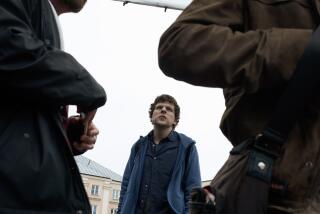‘Schindler’s List’ a Realistic Portrait
- Share via
Robbie Kinberg denounces Steven Spielberg’s “Schindler’s List” (“Spielberg’s Still in Never-Never Land,” Calendar, Jan. 10) as “fodder to historical revisionists who insist that the Holocaust never happened.” Yet he suggests that Spielberg should revise the historical facts about Oskar Schindler and the “Schindlerjuden,” as they call themselves.
For example, he would prefer that Schindler be portrayed as being smaller than he actually was. Liam Neeson, who plays Schindler, is a bit smaller than Schindler was, but Kinberg thinks using an actor close to Schindler’s actual size results in his “deification.” Another fact he would like changed is that some 300 Jewish women who worked for Schindler miraculously escaped being gassed at Auschwitz. Kinberg decries, “How are we to know that gas ever came down?”
I don’t know what version of “Schindler’s List” Kinberg saw, but in the version I saw, human ashes spewed out of a crematorium and fell on the street, the cars and Oskar Schindler himself.
Shortly after that scene we see the exhumation of thousands of bodies from a mass grave, supervised by madman Nazi commandant Amon Goeth, who complains about having to burn the evidence. Does Kinberg suppose that scene will lead us to believe that these Jews had died comfortably of old age?
Kinberg complains that “Schindler’s List” is “more about a single Nazi than it is about 6 million Jews.” I don’t recall Spielberg announcing that he intended to cinematically document all these atrocities. Toward that end, there are already a number of excellent documentary films in existence.
Spielberg made a feature film based on a true story about real people, many of whom are alive today. The facts of their lives cannot be rewritten to satisfy Kinberg’s agenda, as worthy as it may be. One of these survivors, Leopold Pfefferberg, struggled for years to get this story told, finally talking author Thomas Keneally into doing the research and writing the account. I don’t know how much he or the other survivors would appreciate Kinberg’s suggested revisions.
The film centers on Oskar Schindler because his transformation from being a self-absorbed businessman to someone who would risk everything he has--including his own life--to save 1,100 Jews is fascinating and deserves to be told as it actually occurred.
Kinberg needn’t worry about the Nazis being portrayed inaccurately. The Nazis in “Schindler’s List” are plenty bad. They shoot Jews as casually as swatting flies. That this film could possibly serve as “fodder” to the Holocaust deniers is preposterous.
More power to you, Mr. Kinberg, for wanting to expose those who would have us believe that the Holocaust wasn’t really as bad as it’s cracked up to be. But please go after the right people. Deborah Lipstadt’s book, “Denying the Holocaust: The Growing Assault on Truth and Memory” (the Free Press, 1993) identifies them. The director of “Schindler’s List” is not among them.
*
Spielberg knew this film would be scrutinized by everyone from Talmudic scholars to your average Spielberg-bashing snob. He could have rested on his laurels (not to mention his money) by not attempting to tell this difficult story.
But he did tell it. And with such eloquence and restraint that even his harshest detractors (excluding Kinberg) have begrudgingly acknowledged his astonishing accomplishment.
More to Read
Only good movies
Get the Indie Focus newsletter, Mark Olsen's weekly guide to the world of cinema.
You may occasionally receive promotional content from the Los Angeles Times.










